Existence, uplift, and science news
October 26, 2012 by David Brin
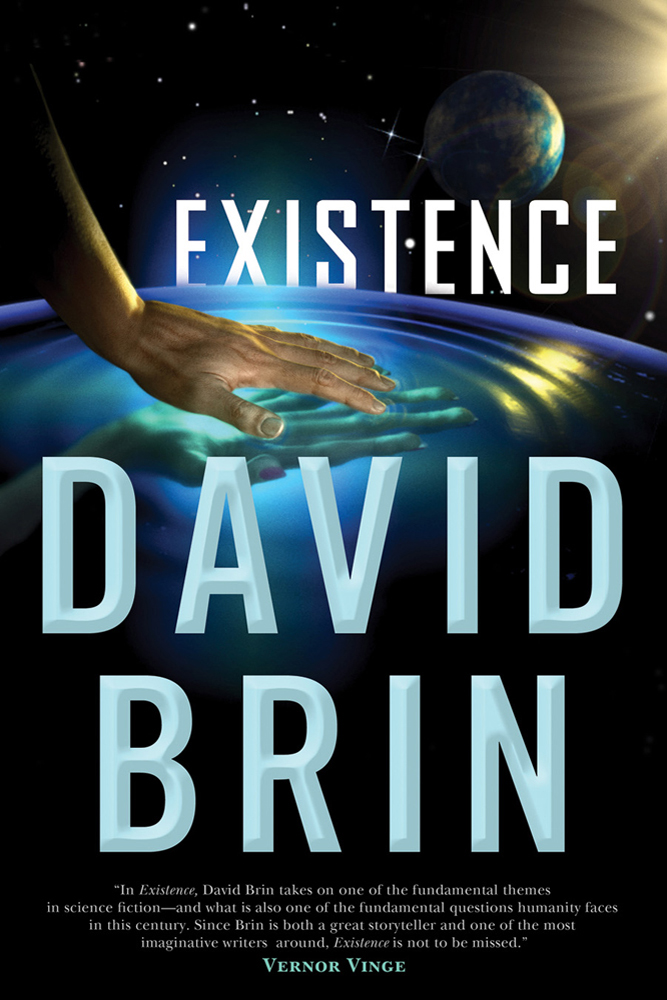
After an incredible decade, in which the number of planets known beyond our solar system increased from zero to several thousand, astronomers have detected an Earth-sized world orbiting between the two major stars nearest to our system, Alpha Centauri A and Alpha Centauri B.
Much too hot to sustain life, it nevertheless will help in narrowing down the search space for others. (“News from Alpha Centauri.” Cool to say that!)
In a related matter – I’ve posted an essay, Are we alone in the universe? about the the Fermi Paradox, the Drake Equation and all that where-are-the-aliens jazz on the web site of Orbit Books, in conjunction with the upcoming release in the U.K. of the trade paperback version of Existence…
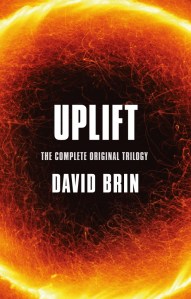
…soon to be followed by Orbit’s special new omnibus collections of my Uplift Series of novels. A gorgeous-big volume entitled UPLIFT will contain Sundiver, Startide Rising and The Uplift War. Another omnibus compendium — EXILES — combines Brightness Reef, Infinity’s Shore and Heaven’s Reach. Soon to follow… beautiful reprints of Earth and The Postman.
A Potpourri of Cool Science!!!
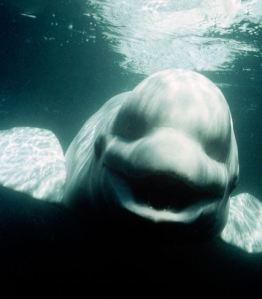
Researchers discover a beluga whale, named NOC — whose vocalizations were remarkably close to human speech.
To amplify the comparatively low-frequency parts of the vocalizations, a beluga named NOC over-inflates what is known at the vestibular sac in his blowhole – which normally acts to stop water entering the lungs. In short, the mimicry was no easy task. So they ARE trying to meet us halfway, after all!
A recent study published in Trends in Genetics suggests that a person’s genes may affect their later political thinking and views of the world almost as much as his circumstances or upbringing do, and far more than many social scientists have been willing, until recently, to admit.
It seems that the degree to which you are politically knowledgeable is largely genetically determined, while your party affiliation is acquired from upbringing… though this then later diverges after adults leave the nest. And yes, researchers found a further 11 genes, different varieties of which might be responsible for inclining people – in general personality ways, not doctrine, of course – towards liberalism or conservatism.
Interesting to compare to other recent science showing differences in which parts of the brain are used to think about political matters. And what this has to say about the fact that American scientists have voted with their feet, abandoning one of the parties en masse.
Want to see the reason distilled? Click to see the original of this little poem, which is sooooo redolent in this political season.
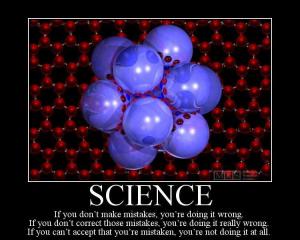
“SCIENCE:
If you don’t make mistakes, you’re doing it wrong.
If you don’t correct those mistakes, you’re doing it really wrong.
If you can’t accept that you might be mistaken, you’re not doing it at all.”
Ocean acidification: deadly and undeniable
More than half of the six billion-plus metric tons of carbon released annually into the atmosphere is absorbed by the Ocean. Phytoplankton alone process an estimated 22 million tons of CO2 each day. This carbon sink does not come without consequence. In the last 100 years, our seas have become 30% more acidic, and that pace is accelerating. This increased acidity is impacting soft-shelled organisms such as crabs, shrimp, and oysters, many of which are unable to maintain their shells in this new, man-made acidic Ocean.

Now the crux. The ocean acidification trend lines come from entirely different sciences than those that study the greenhouse effect — research establishments in twenty countries that have nothing to do with atmospheric studies. And no Koch-supported “institute” has found anything wrong with them.
Unlike atmospheric studies, here’s an area where your denialist uncle could take the samples and measure them, himself. Two-thirds of our oxygen comes from the Ocean. But if rising acidity collapses the oceanic food chain, including phytoplankton, suffocation might be just one of many things we’ll sue the denialists for. And tell your uncle that includes him. The refugees will need homes. The denialists will share or lose theirs, by simple tort law. Time to adapt, out of simple self-interest.
Open source and hope
In a recent blog I described a vast array of ways that folks are empowered (or not) to engage in citizen science or open source development. Now comes another aspect to that movement. Can the open source science movement extended lessons derived from its central core — programming?
Software engineer and Linux pioneer Linus Torvalds saw a solution to this problem—“git,” a system that allows for collaborative development. This in turn inspired Preston-Werner and Hyett to create GitHub.com, a hosting site that allows multiple programmers to work on the same source code at the same time, with changes getting unique signatures.
I’ll be keynoting a Qualcomm conference on Open Source on November first. Here’s a site that explains some aspects, and that will link you to Clay Shirky’s fascinating TED talk about the great hope … how open source software might lead to “a new way to argue.” (I portray this happening in EXISTENCE and also in a scholarly paper.)
Space!
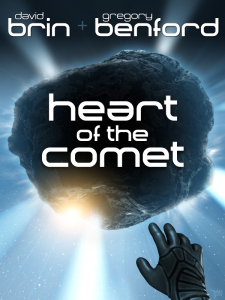
Don’t get your hopes up just yet for a comet extravaganza. But do make plans to keep an eye on the sky in late 2013! Comet ISON will pass very close to the sun and may become the brightest in all our life-times. Well, perhaps. Learn all about these cosmic visitors (the topic of my PhD thesis) in HEART OF THE COMET!
The Japanese IKAROS spacecraft is (at last) a full scale solar sail test mission, something NASA for some reason avoided doing for half a century. The test probe has already passed Venus. And now it’s time to start using this naturally attractive (if slow) means of travel a lot more often in space.
Spiders from (on) Mars? With apologies to David Bowie… Are the mysterious black “spider” discolorations in some dune area of Mars from CO2 geysers? Or some even weirder explanation?
And speaking of the Red Planet: Craig Venter and Jonathan Rothberg are competing to put a DNA sequencing machine on Mars, each claiming that it is the best way to search for and confirm Marian life. “This will work only if the DNA on Mars is exactly the same in its fundamental structure as on Earth,” says Steven Benner, president of the Foundation for Applied Molecular Evolution in Gainesville, Florida.
He says he’s skeptical that will be the case: “It is very unlikely that Terran DNA is the only structure able to support Darwinian evolution.” Though I lean slightly toward Venter. Some of the chemistry of DNA life has been shown to imply have the best combinations of stability and just the right breakability and attachment probabilities in the bonds.
And more sci potpourri
A very nifty innovation called MosquitoDMZ offers a new kind of trap that lures females to lay their eggs in a place where they cannot thrive. A clever technique. Though I still like the laser zappers I predicted in EARTH!
Imagine a clock that will keep perfect time forever, even after the heat-death of the universe … a “space-time crystal,” a four-dimensional crystal that has periodic structure in time as well as space. The concept of a crystal that has discrete order in time was proposed earlier this year by Frank Wilczek, the Nobel-prize winning physicist at MIT. … And now other scientists claim they know how to made one.
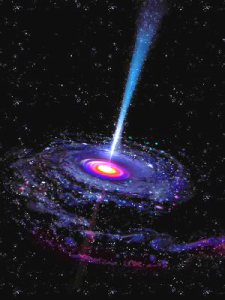
How cool is this? A singularity laser? “The idea is to create a black hole next to a white hole so that their event horizons are separated by just a few hundred micrometres and create a small cavity. Then they show that when light is fired into this cavity, it is reflected off the white hole horizon onto the black hole horizon, back to the white again and so on.
Researchers show (theoretically, for the foreseeable future) that during each reflection, stimulated emission of Hawking radiation (from the stressed vacuum itself) effectively adds to the beam, thereby amplifying it. They say this additive process is logarithmic so a small seed of light ends up producing an intense beam of radiation.
“Their real triumph, however, is in showing how such a device could be made in the lab. They point out that the refractive index of certain materials depends on the intensity of light inside them. So the light itself changes the refractive index. That means a very intense beam can create a huge gradient in the refractive index. This gradient can be so steep that it behaves like an event horizon. In fact, a single pulse can create black hole horizon at its leading edge and a white hole horizon at its trailing edge. They go on to say that it ought to be possible to do this in optical waveguides made of diamond.”
Schades of Schadenfreude! This new game lets you play a virus or nanoplague and acquire new characteristics in search of the way to slay all life on Earth!
iO9 offers a pretty cool and logical and interesting appraisal of time travel fiction. Very smart… if nowhere near complete. I can think of five other scenarios…
Professor Sandy Pentland of MIT discusses Big Data and how the tsunami of information about you and me may be used by corporations and elites… and possibly in a way that’s fair to common folk. Or else become a tool for Big Brother.
Methods for performing encrypted communications using quantum-entangled “teleportation” are moving forward rapidly. Recent experiments have achieved results over several kilometers. Chinese teams are even planning soon to launch a satellite to test quantum-entangled communications back and forth to orbit and EUropean and Japanese groups are also in the race. But not (apparently) the United States… for some strange bureaucratic reasons.
Meanwhile, there are advances in the field of quantum computing, with the latest endeavor featuring an alliance with Amazon-founder Jeff Bezos and the CIA’s research group In-Q-Tel, to support the D-Wave company’s latest quantum computer — 512 super-chilled , superconduction niobium loops are arrayed in a layout of qubits that conforms to an algorithm that solves a particular kind of optimization problem at the core of many tasks difficult to solve on a conventional processor. It’s like a specialized machine in a factory able to do one thing really well — the range of “optimization” problems.
Reproduction without any(!) sex at all?
Want baby mice? Grab a petri dish. After producing normal mouse pups last year using sperm derived from stem cells, a Kyoto University team of researchers has now accomplished the same feat using eggs created the same way. In other words, stem cells can be turned into sperm and ova and viable offspring result.
I admit surprise. I truly thought that mammalian meiosis — the division of (say) our human diploid 46 chromosome cells into subtly shuffled sets of haploid gametes (reproductive sperm or ova) with 23 choromosomes each) would turn out to be a complex process, requiring not only pluripotent stem cells and a triggering set of environmental cues, but the ongoing participation of a surrounding, complex organ, like the ovaries or testes, to take the cells through a multi-stage process.
In retrospect, I am not sure why I felt that to be likely. Perhaps because the shuffling and separation and creation of the surrounding active cells seems fraught with potential for so many errors… by comparison, fertilization and creation of a blastocyst zygote and embryo seems simple! Just a matter of cellular automata sorting themselves out through neighbor interactions. But clearly, I was wrong. (I’ve been known to be! Remember that poem about science?) This just keeps getting stranger.
Questions? Are the offspring fully re-methylized… completely young? Or do they inherit the donor’s aged chromosomes, the way the cloned Dolly the Sheep did? And does this mean the only remaining miracle is the womb? That women can now well and truly do without males, by creating their own sperm? Do NOT anger that woman researcher at the next lab bench, fellows.
The latest from “are we in a simulation?”
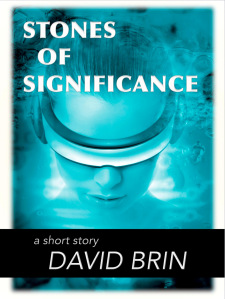
I recall when “are we all living in a simulation?” was a really cool and surprising question! Yes, I’m that old. So old that my novelette “Stones of Significance” explores a few aspects of this topic for the first time, before they became cliches. But time… or its simulated effects… moves on, and now there’s serious thought to how physics itself might test whether this “existence” of ours is in the original universe or one of the mazillion simulated ones being run in super advanced computers in that “real realm.”
(Or is it turtles (simulations) all the way down?)
Some first order reasons to imagine it is so? Well, the simulators would have to save money or computational power somehow, by limiting the burdens of the simulation. One way to limit the size of the space the inhabitants can experience directly (rather than just observe with telescopes) is to have an upper speed limit. Also a bottomost temperature. And a limit to the degree that you can parse position and momentum… or energy and time… so that you cannot dive into the small to an infinite — or fractal — degree.
Now see a paper that suggests experiments that might actually observe the mathematical latticework within which we are being simulated. Assuming that lattice of time and position is cubic, as are all our current cellular automata models, then that spacing should show up in high energy physics experiments. (Of course, the uber-modellers might use a different stacking of cells, to mess us up! Better check for hexagonal and other crystal structures, as well!)
And finally…
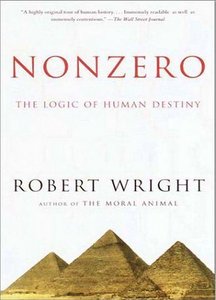
Science is not immune to controversy, especially around the edges. (Indeed, scientists are among the most competitive humans that our species has ever produced.) With science itself under concerted and deliberate attack by one entire wing of U.S. political life — (and sneered at by a few far-extremists of the other wing) — it would be surprising not to see the issues fester and broil even at sites like discovermagazine.com.
See this essay, in particular, discussing why author Robert Wright has taken a sudden veer, inviting “prominent creationists” to inveigh upon his “bloggingheads” show without proper counter-weight foils or challenge. Yes, he also brings on prominent atheists. All should be challenged in the spirit of reciprocal accountability.
While I have long recommended Wright’s book NONZERO as a good way to introduce folks to the concept underlying our enlightenment — the positive sum game — I have grown increasingly worried by Wright’s foray’s down avenues that veer away from science, modernity or even history. Well well. It’s too soon to judge… and maybe it’s just a different standard of looseness in style of disputation. Indeed, I would generally trust Wright over his accusers! Still, we live in an era when polemic too-often trumps reason. Your reportage on this is welcome.
And yes, there will be more social-political commentary soon. So far, I have covered two major topic areas that ought to be significant (and overwhelming) for any U.S. citizen who claims to truly care about the future of America, the Western Enlightenment Experiment, and our species. The Eight Reasons for Our Budget Deficit and the stark Difference Between the Ways that Democrats and Republicans Wage War.
I don’t expect to have much influence — those who are persuadable by facts and evidence have long ago taken sides, favoring the candidate who most often mentions the word “science.” Still, it’s important. And we all have uncles and aunts who just might listen. Or read with a willingness to learn.
